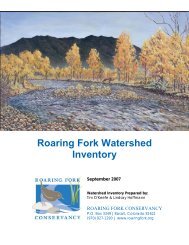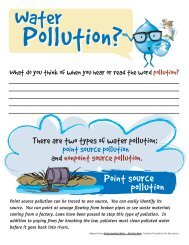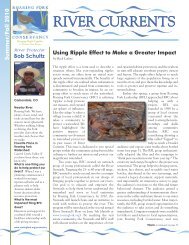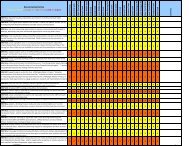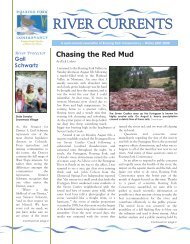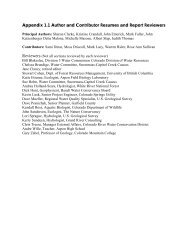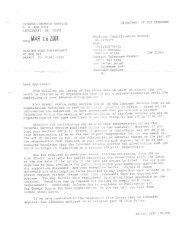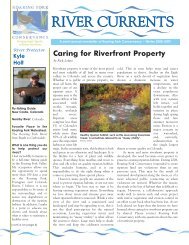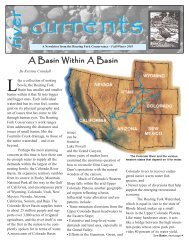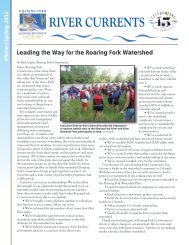2006 Roaring Fork Watershed Water Quality Report
2006 Roaring Fork Watershed Water Quality Report
2006 Roaring Fork Watershed Water Quality Report
- No tags were found...
You also want an ePaper? Increase the reach of your titles
YUMPU automatically turns print PDFs into web optimized ePapers that Google loves.
8. Threats to Healthy StreamsPollutionGrowing public awareness and concern for controllingwater pollution led to the enactment ofthe Federal <strong>Water</strong> Pollution Control ActAmendments of 1972. As amended in 1977,this law is known as the Clean <strong>Water</strong> Act(CWA). The Act established the basic structurefor regulating discharges of pollutants intothe waters of the United States. The CWAimposes fines, and remediation efforts areundertaken when violations occur. The CWAalso requires that each metropolitan area in theUnited States prepare a storm water runoffremediation plan. The Conservancy hasworked closely with Aspen, Basalt, andGlenwood Springs to help implement theseplans.Point source pollution has an identifiablesource, such as a pipe dumping waste directlyinto a stream,which makesassessment ofresponsibility relativelyeasy. Inthe <strong>Roaring</strong> <strong>Fork</strong><strong><strong>Water</strong>shed</strong> wherethere is littleindustry, pointsources of pollution are most common from wastewatertreatment facilities.Non-point source pollution (NPS) ismore difficult to track and treat than pointsource pollution and and is the number onesource of pollution in the <strong>Roaring</strong> <strong>Fork</strong> Valley.NPS pollution is not discharged from a singlesource; instead many sources that are spread outover a large area combine to create thisproblem. A large source of NPS pollution in thewatershed is storm water runoff that carriessediment and pollutants from streets andparking lots through storm drains and intovalley streams. Over-fertilization of lawns, golfcourses, and agriculture as well as improperseptic tank construction or maintenance canincrease non-point source pollution, especiallyaffecting groundwater.Flow AlterationThe phrase “the solution to pollution is dilution”sums up the importance of an adequate water supplyfor maintaining high water quality. Low flows intensifypollutant problems and increase sediments thatcan smother trout eggs and aquatic vegetation. TheConservancy’s recently completed Stream FlowSurvey report describes in detail flow alteration in thewatershed (the full report is available at:www.roaringfork.org/publications). The <strong>Roaring</strong> <strong>Fork</strong><strong><strong>Water</strong>shed</strong>’s flows have been, and continue to be,Transbasin Diversions9





